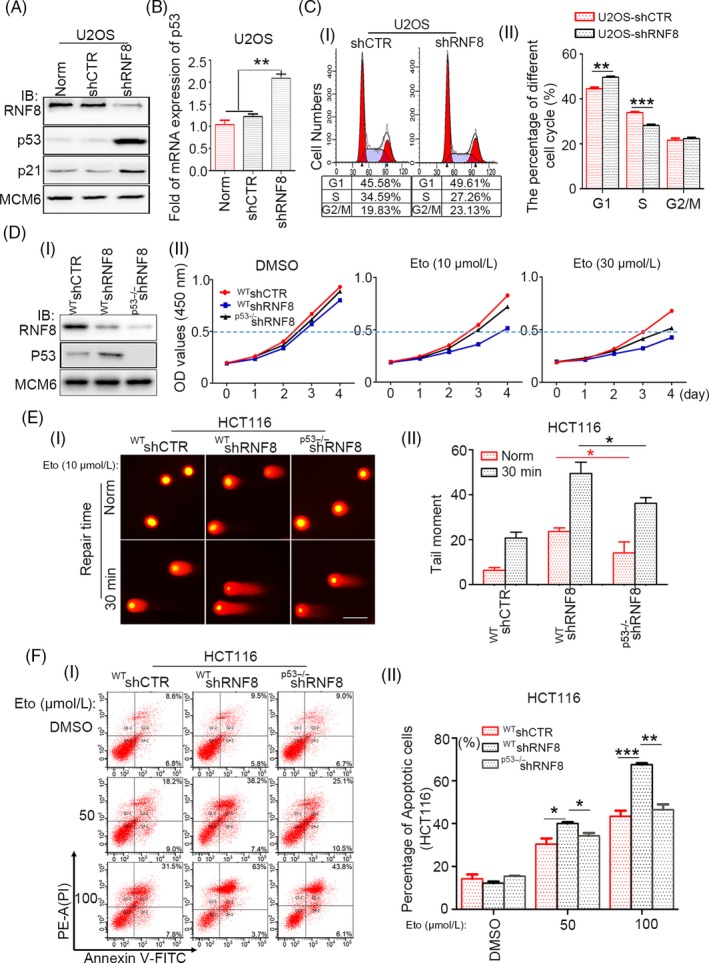Figure 3.

The increased sensitivity of RNF8‐deficient cells to DSBs is correlated with the high expression of p53 gene. A, Western blot analysis of the depletion efficiency of RNF8 and the expression efficiency of p53 and p21 in differently treated U2OS cells, and MCM6 was used as loading control. B, Real‐time PCR analysis of the expression efficiency of p53 in differently treated U2OS cells. C, (i). Flow cytometry analysis of cell cycle distribution of U2OS‐shCTR and U2OS‐shRNF8 cells. (ii) The percentage of cells in each cell cycle phase. **P < .01, ***P < .001, n ≥ 3. D‐(i) Western blot analysis of the depletion efficiency of RNF8 and p53 in differently treated HCT116 cells. (ii) CCK‐8 experiment shows that the proliferation ability of differently treated cells. HCT116WT‐shCTR, HCT116WT‐shRNF8 and HCT116p53−/−‐shRNF8 cells were treated with DMSO, 10 or 30 μmol/L Eto for 20 min and then replated. The observations were made at 0, 1, 2, 3, 4 days. E, (i) DSBs in differently treated HCT116 cells exposed to 10 μmol/L Eto and repaired for 30 min were analysed by Neutral comet assay. Scale bar = 30 μm. (ii) The olive tail moment was determined by using CometScore software, and more than 50 individual comets were counted for each sample. F‐(i) The different types of HCT116 cells were incubated with 0, 50, or 100 μmol/L of Eto for 24 h, and flow cytometry analysis of Annexin V‐FITC/PI staining was conducted to examine the dead cells. (ii) The total number of Annexin V‐positive and Annexin V/PI double‐positive cells is quantified. *P < .05, **P < .01, ***P < .001, n ≥ 3
